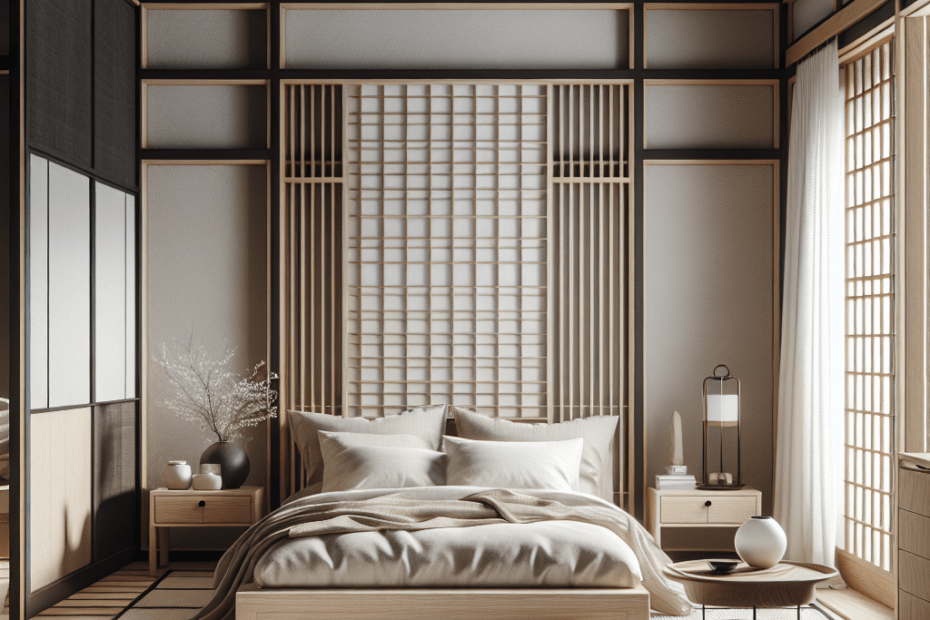The Power of Neutral Palettes in Japandi Bedrooms
More people are discovering the elegant and minimalist style of Japandi bedrooms. This design trend, which beautifully combines Japanese simplicity with Scandinavian functionality, has gained popularity. A significant element of this design is the use of neutral palettes. Neutral palettes in Japandi allow for a calming and inviting space without overwhelming the senses.
Understanding Japandi Style
Japandi is a fusion of two minimalist design philosophies: Japanese and Scandinavian. They simplify spaces, focusing on functionality and natural beauty. By incorporating neutral palettes in Japandi design, room atmospheres become serene and clutter is minimized. Colors such as beige, soft grays, and whites are prevalent, setting the foundation for a peaceful environment.
Benefits of Neutral Palettes in Japandi Bedrooms
Neutral palettes offer several benefits when used in Japandi bedrooms. Firstly, they create a sense of tranquility. The subtle hues and muted colors evoke peace, allowing individuals to relax fully in their spaces. According to a 2022 survey by Interior Design Society, 78% of participants reported feeling calmer in bedrooms with neutral color schemes (Interior Design Society).
Additionally, these palettes provide versatility. Neutral colors can easily match different textures and styles, making it easier to introduce various elements or adjust the room’s decor without major changes. Moreover, these colors tend to reflect light better, making spaces appear brighter and more inviting.
Incorporating Nature
Using neutral palettes does not mean the bedroom has to be devoid of personality. In Japandi design, there’s a profound connection to nature. Earthy tones found in wood, stone, and metals can be seamlessly incorporated into these spaces. For example, adding potted plants or using natural wooden furniture complements the neutrality and enhances the room’s warmth and texture.
The Role of Textures and Materials
Texture plays a crucial role in Japandi bedrooms. While the colors might remain neutral, textures add depth and interest. Materials like linen, wool, and bamboo are popular choices. They add a tactile experience to the visual aesthetics, making bedrooms not just simple, but also cozy environments to retreat to.
| Element | Role in Japandi Design |
|---|---|
| Color | Evokes calmness and tranquility |
| Texture | Adds depth and interest |
| Materials | Enhances natural beauty and warmth |
How to Create a Japandi Bedroom with Neutral Palettes
To achieve a Japandi bedroom using neutral palettes, start by selecting wall colors in soft grays or off-white shades. The next step is to choose functional furniture pieces made from natural materials like wood or bamboo. Fabrics for curtains, bedspreads, and cushions should prioritize comfort and softness, using materials such as linen or cotton in earth tones.
Next, introduce subtle decorations. Items like wooden bowls, minimalist art, or ceramic vases maintain the serene theme without drawing too much attention. Finally, consider adding one or two indoor plants to enhance the natural element, thereby enriching the overall bedroom atmosphere.
Key Takeaways
- Japandi style merges Japanese and Scandinavian design principles.
- Neutral palettes in Japandi bedrooms promote tranquility and versatility.
- Natural textures and materials boost warmth in the design.
- Subtle decor and greenery complement the minimalist theme.
FAQ
-
Why are neutral palettes important in Japandi bedrooms?
They promote a sense of calm and simplicity, allowing the space to feel serene and uncluttered.
-
What materials are commonly used in Japandi designs?
Natural materials like wood, linen, bamboo, and wool are frequently used for their texture and warmth.
-
Can neutral palettes be boring?
Not when combined with diverse textures and natural decor elements, as these add depth and visual interest.
-
How do neutral colors affect a room’s appearance?
They reflect light well, making rooms appear brighter and more spacious.
-
What decor items complement a Japandi bedroom?
Minimalist art, ceramic vases, and indoor plants work well to enhance the natural and serene theme.
